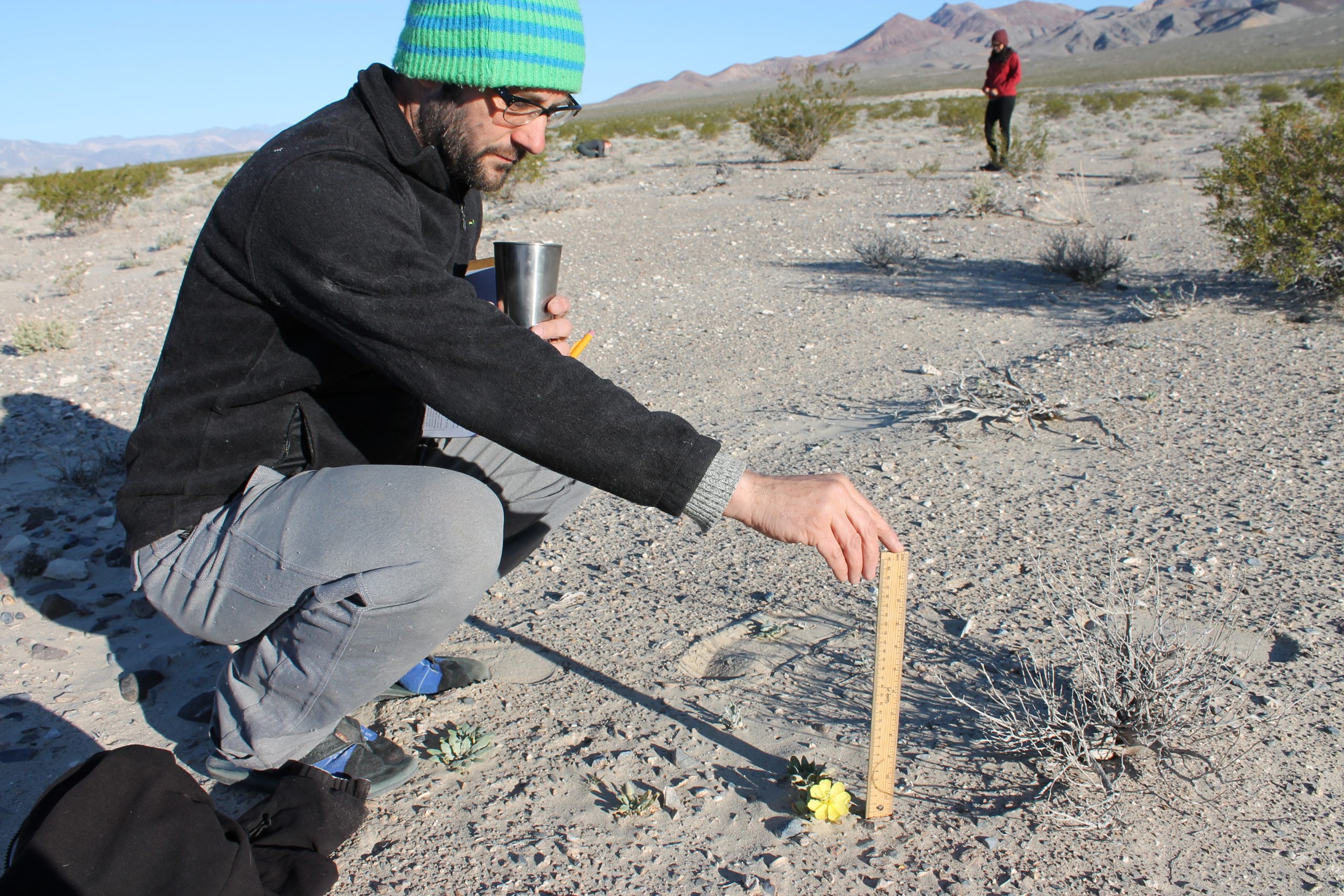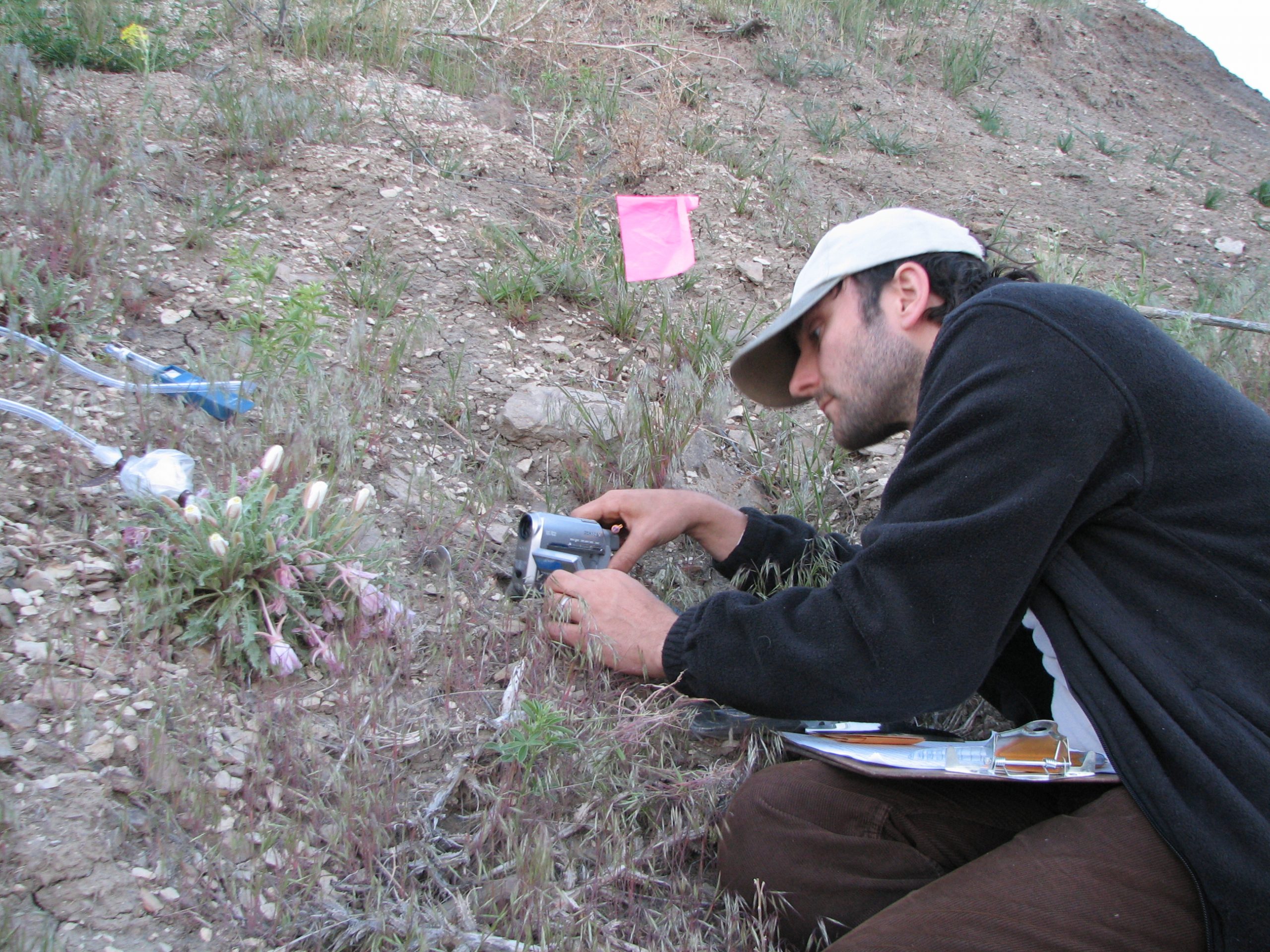Jeremie Fant
September’s Conservation Champion, Dr. Jeremie Fant of Chicago Botanic Garden, has devoted his career to understanding and advancing the conservation of rare plants and their genetic diversity. By using genetic approaches to his areas of focus – rarity, restoration, and ex situ conservation – Jeremie’s work provides valuable insight into the future of rare and endangered plant species by identifying risks and potential management improvements that can contribute to their preservation and recovery. We are inspired by Jeremie’s dedication and passion for conservation genetics, and we thank him for all the ways he helps Save Plants.
When did you first fall in love with plants?
As far as I can remember, I have been surrounded by plants – be it pottering with my mum in our garden, going for walks in the remnant natural areas around my hometown, or even just watching birds feed on our native street trees. The older I got and the more engaged I was, the more it became obvious to me that plants were central to all these activities. With time my passion grew. I think it helps that I grew up in Australia, which has such unique – some might even say bizarre – flora, so it was easy for this young botanist to find it all so engaging.

What was your career path to Chicago Botanic Garden?
Like many in our field, my journey was far from linear. I grew up a first-generation immigrant, and my parents valued education but did not always know the full spectrum of possibilities. So although I was expected to go to university, the obvious options for me were professional degrees. I landed on pursuing a degree in Horticulture, Viticulture and Oenology (a.k.a. fruit and wines), combining my loves of plants, gardening and cooking (and wine!). Then, during my studies, I found myself gravitating toward a new passion: Genetics.
After a brief stint working for a horticultural consultancy firm, I realized that graduate school would allow me to travel the world and continue to pursue my new passions. I was lucky enough to get a scholarship to attend Cambridge University, where I studied hybridization in Potamogeton species. This was figuratively, literally and geographically distant from what I originally saw as my career trajectory, but I have never looked back. It was the best decision of my life.
Not only did graduate school open many doors, but it also made me realize that aspects of the academic career were not for me. Although I went on to complete two postdocs (at Cambridge and W.K. Kellogg Biological Station, Michigan), when the job at Chicago Botanic Garden for a geneticist was advertised, I knew that I had to apply. Having volunteered at my Blackhills Botanic Garden as an undergraduate, this was an exciting career option for me – and it helped that it was based in Chicago, a city I was sure I would love. Initially I saw this as a temporary stepping stone on my way back to Australia, yet I am still here after almost 20 years, and I still enjoy every moment. The Garden’s science program has grown tremendously, and I have grown with it.
In your experience, what are some of the pressing conservation needs impacting the rare and native plants of the United States?
This is a long list – which is not surprising, as we have a long list of species threatened. Working on the Illinois Endangered Species Protection Board, it has become obvious that in this state alone we have a lot of work to do. Almost more plants are listed in Illinois than all other taxonomic groups combined (as of 2021, there were 266). I do not doubt that this is the same throughout the country. What is concerning is that there is a good chance that this list could be longer, given the lack of information about the status of many groups. So I do not think there is a single issue that could explain the multifaceted reasons these species risk extinction in our state.
What I do think is critical is the information deficit. In this era of large datasets, huge databases, and many community science programs, we are increasingly in a better place to gather and collate this information. The more we know, the more we can target our approaches and resources to help more plants. And with better data coordination, we can do a better job of finding best practices for protecting the increasing number of threatened plant species
Much of your work is focused on the conservation of genetic diversity – what related conservation initiatives are you currently working on at Chicago Botanic Garden?
Genetic diversity is the third – but often ignored – component of biological diversity. Its inclusion is not surprising, given it is required for natural selection and adaptation. My work generally focuses on rarity, restoration and ex-situ conservation. Using genetic approaches in these areas can give us valuable insight into the future of species, identify risks to populations of rare species, and identify potential management changes which can help their recovery. Overall, my work has focused on how we can best preserve the diversity of species, both in situ and ex situ – but even more than this, monitoring genetic diversity in collections and reintroductions to see how well we are achieving the genetic goals we set out for ourselves when conserving the species in our care.

What successes or challenges have you encountered in your work?
I think the big challenge is that, although many people understand the importance of genetics, they also find it an intimidating topic, which can hinder discussions on best practices. This phenomenon is quite widespread. Several studies have shown that many conservation policy plans might mention genetics, yet very rarely is it explicitly used to make decisions. I attribute this to two factors: genetics is complex, and it is not immediately visible. A good example is the way we view our plant populations. When we look at a population of any plant species, we rarely see a group of individuals, but rather a collection of interchangeable representatives of that population. Yet if we saw every plant in that population as having a unique genetic make-up, each with a unique response to environmental cues, it would give us a different perspective on what we are saving.
This genetic complexity of a population should not be surprising when we realize that any individual is the result of over 30,000 interacting genes. It is almost mathematically impossible for any two plants to be identical. Although staggering to think about, this matches our own experiences, given there are 7 billion humans and all are unique (even twins). Recognizing the genetic complexity of individuals and populations allows us to approach the conservation of genetic diversity with a different lens. The focus shifts from just saving a species to its capacity to respond to all biotic, abiotic and climatic conditions that a population will experience in a lifetime.

What has surprised you about working with and learning more about rare plants?
What never ceases to amaze me is a species’ resilience. With all the stresses we have thrown at our natural communities, many of them – including the rare species within them – manage to hang on. There are even occasional stories of lost species being found or populations being rediscovered. These make me optimistic about what we can achieve through restoration and reintroductions. Unfortunately, a few resilient individuals still represent only a subset of the original diversity. As a geneticist, I know there is still a long, slow road to recovery for many rare species, but I am optimistic we can do it.
What advice would you give to those who wish to learn more about how they can help save imperiled plant species?
Get involved, however you can. The demand for help is very high, and a large number of resources are available. The conservation community is a community of many and is growing. Our success increases as more people are engaged – from students, volunteers, and scientists to land managers and government agencies. At times, tasks ahead seem impossible and the outlook seems grim – but it is not. There are many groups out there doing much great work, and so many ways you can engage with them – from community science programs, botanic gardens and non-profit volunteer groups to courses, graduate programs, and adult education.
An enormous number of plants need saving, and we need an army to do it. The more engaged you are, the more informed you become. As the number of educated and diverse voices grows, we also grow our capacity to share our passion for plants and our desire to save them.